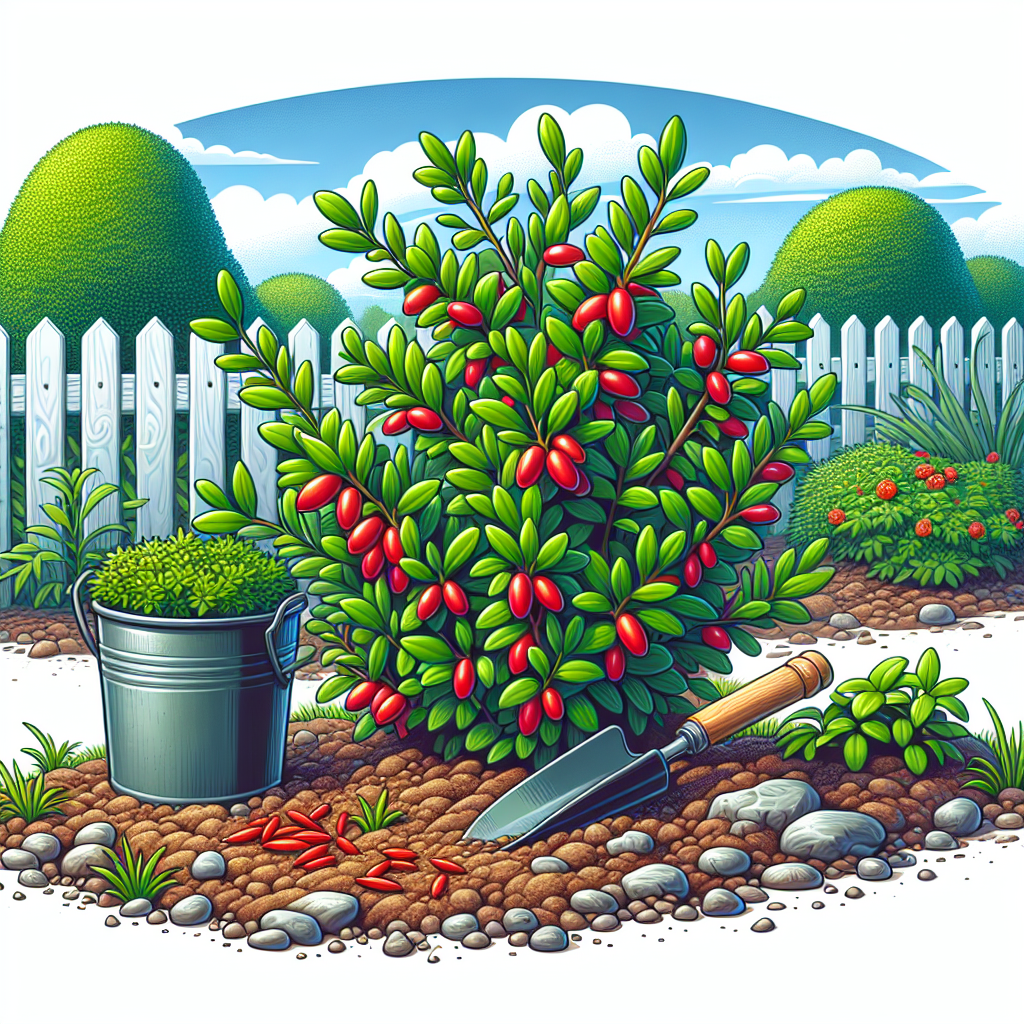Pruning Fruit Trees for Maximum Yield: Tips and Tricks
Updated July 26, 2024 at 1:17 am

Understanding Pruning Basics
Getting the best yield from your fruit trees involves a blend of art and science. If you’re looking to maximize your harvest, understanding the basics of pruning is essential. Pruning is not just about shaping your trees; it’s a strategic practice crucial for the health and productivity of your fruit-bearing friends.
Pruning involves selectively removing parts of a plant, such as branches, buds, or roots to boost fruit production. It helps to improve the tree’s structure, prevents the spread of disease, optimizes sunlight penetration, and encourages the production of high-quality fruit. Let’s delve into the practical tips and tricks that will ensure your trees are primed for an abundant harvest.
Best Time to Prune for Optimal Yield
Timing is everything when it comes to pruning. For many fruit trees, the dormant season – late winter or early spring – is ideal. This period just before the spring growth spurt means cuts will heal faster, there’s less risk of disease infection, and it’s easier to see the structure of the tree without leaves in the way.
Dormant pruning invigorates trees for a vigorous bloom, setting the stage for a fruitful season. However, timing can vary depending on the tree species and climate, so it’s essential to research the specific needs of your fruit trees for the best results.
Techniques for Pruning Different Types of Fruit Trees
Pruning techniques can vary significantly between different types of fruit trees. For example, apple and pear trees benefit from a central leader system, which encourages a strong main vertical branch with well-spaced lateral branches. On the other hand, stone fruits like peaches and plums are often pruned in an open-center structure, promoting more sunlight penetration and air circulation within the canopy.
Understanding the growth habits and fruiting patterns of your trees is crucial. While some trees bear fruit on old growth, others set their fruit on new growth. This knowledge influences the approach and extent of pruning required.
Essential Pruning Tools and Their Maintenance
To ensure a smooth pruning process, having the right tools is non-negotiable. A good pair of bypass pruners, loppers, and a pruning saw are the basic necessities. Bypass pruners provide clean cuts for smaller branches, loppers are ideal for medium-sized branches, and a pruning saw can handle thicker limbs.
Maintaining your tools is as important as having them. Keep them sharp, clean, and oiled to prevent disease spread and ensure precise cuts. A brand that has received high praise from gardeners for durability and precision is Felco. Their F-2 Classic Manual Hand Pruner, for instance, is renowned for its ergonomic design and ease of use.
Pros and Cons of Felco F-2 Classic Manual Hand Pruner
- Pros:
- High-quality construction offering durability
- Ergonomic design ensuring comfort during prolonged use
- Precision cutting with easily replaceable blades
- Cons:
- Higher price point compared to other brands
- May not be suitable for those with smaller hands
Many gardeners often report that investing in a Felco pruner pays off in the long run due to its long-lasting quality and the ease with which the parts can be replaced or sharpened.
Find This and More on Amazon
Practical Steps to Prune Your Fruit Trees
Let’s take a look at the practical steps you can apply to prune your fruit trees for maximum yield. The process involves several key actions: removing dead or diseased wood, thinning to reduce dense areas and allow light to penetrate, heading back to encourage new growth, and shaping for structural integrity and fruit accessibility.
Always start with sharp, clean cuts at a 45-degree angle away from the bud to promote healing and prevent water accumulation. Remove suckers and water sprouts that sap energy from the productive parts of the tree. Moreover, use a systematic approach to your pruning, working from the bottom up and inside out, so you can assess and make deliberate decisions on each cut.
Common Pruning Mistakes to Avoid
Pruning can be intimidating, and mistakes are part of the learning curve. However, some common blunders can drastically impact your trees’ health and yield. Over-pruning can stress your trees, making them more susceptible to disease or weather damage, while under-pruning leads to poor air circulation and light penetration, reducing fruit quality.
Avoid cutting too close or too far from the bud, as it may either damage the bud or leave a stub that can invite disease. Ignoring the tree’s natural form and over-thinning can also weaken the structure and reduce fruit production. By knowing these common pitfalls, you can steer clear and keep your trees in optimal condition.
Post-Pruning Care for Fruit Trees
After pruning, your fruit trees will need some extra TLC to recover from the stress of pruning. Applying a well-balanced fertilizer provides the necessary nutrients for healing and growth. Additionally, ensure adequate watering, especially if the weather is dry, to help the tree recover and thrive.
It’s also crucial to monitor your trees for any signs of disease or pest infestations after pruning. A swift response can help keep small problems from becoming big ones, ensuring your trees remain healthy and productive.
Promoting Tree Health Beyond Pruning
While pruning is an integral component of tree care, it is only part of the equation. Protecting your trees from pests and diseases, providing the right amount of water, and ensuring they receive enough nutrients are all crucial to the health and yield of your fruit trees.
Consider incorporating companion planting to help deter pests naturally, or use organic pest control methods to keep your trees healthy. Mulching around the base of your trees can conserve moisture, suppress weeds, and regulate soil temperature. Always pay close attention to the specific needs of your fruit varieties for the best results.
Soil Requirements and Fertilization for Fruit Trees
Fruit trees flourish in soil that provides the right balance of drainage and water retention to support their growth. The ideal soil for fruit trees is well-draining yet fertile; it should be rich in organic matter to provide a steady release of nutrients. Testing your soil’s pH level is also important, as most fruit trees prefer slightly acidic to neutral soil, with a pH between 6.0 and 7.0.
Fertilization plays a significant role in the health of fruit trees. A slow-release, balanced fertilizer applied in early spring can promote healthy growth and fruit production. It’s important not to over-fertilize, as excessive nutrients can lead to lush foliage at the expense of fruit and can also increase susceptibility to pests and diseases.
Creative Pruning and Training Techniques
Beyond the basic cuts, creative pruning and training techniques can enhance both the aesthetic appeal and the fruit yield of your trees. Espalier, for example, is a method of training trees to grow flat against a structure, like a wall or trellis. This can save space in the garden while also promoting a more abundant fruit set, as sunlight can reach more of the tree’s branches.
Similarly, trellis systems for vines like grapes or kiwis can maximize your growing space and create an attractive garden feature. Using the right support structures and training young shoots early on can result in healthier plants and easier harvesting.
Addressing Issues with Disease and Pests
While it’s best to prevent issues with disease and pests by choosing disease-resistant varieties and implementing good cultural practices, sometimes problems do arise. When they do, it’s important to address them quickly and effectively.
Organic methods like neem oil, horticultural oils, or insecticidal soaps can be used to control a variety of pests without harming beneficial insects. For fungal diseases, consider using copper fungicides or sulfur-based sprays. Remember to always follow the label’s instructions and apply these treatments at the right time to maximize their effectiveness.
Long-term Strategy for Pruning Maintenance
Pruning should not be seen as a one-time task but rather as a long-term strategy for maintaining the health and productivity of your fruit trees. By keeping detailed records of your pruning activities and the trees’ responses, you can refine your approach over time.
A consistent pruning regimen will help you recognize which techniques work best for your trees. Monitoring the tree’s health, growth patterns, and fruit production will guide your pruning decisions in the years to come, ensuring a sustained and bountiful harvest.
Pruning for Special Circumstances
Sometimes, you’ll encounter special circumstances that require a different approach to pruning. For instance, if a tree has suffered damage from a storm or pests, you may need to perform restorative pruning to save the tree and encourage new growth.
Additionally, if you inherit an older, neglected fruit tree, it might require more intensive corrective pruning over several seasons to restore its vitality. This takes patience and an understanding of how to gradually reshape the tree without causing undue stress.
Exploring the Pruning Experiences of Others
Learning from the experiences of fellow gardeners can be valuable in developing your own pruning strategies. Joining local gardening clubs or online forums offers insights into what has worked well in your specific climate and soil conditions. Many experts are happy to share their success stories and help troubleshoot common issues.
Books and videos by experienced horticulturists can also provide a wealth of knowledge. Look for authors like Michael Dirr and Lee Reich, whose expertise in the field of fruit tree care is well-regarded by the gardening community.
Pruning Workshops and Educational Opportunities
Attending workshops or classes offered by local cooperative extensions, botanical gardens, or horticultural societies can be an excellent way to gain hands-on experience and personalized advice. These opportunities often cover topics like tree selection, proper pruning techniques, tools, and long-term maintenance planning.
Some of these workshops also feature demonstrations on pruning various types of fruit trees, giving you visual and practical knowledge that you can apply in your own garden.
Concluding Thoughts on Maximizing Fruit Tree Yield
Pruning fruit trees is an essential practice for any gardener aiming to achieve a maximum yield of high-quality fruit. By understanding the basics of pruning and applying the appropriate techniques, you can support the health, growth, and productivity of your trees. Remember, the key to successful pruning lies in knowing your trees, being consistent with maintenance, and continually learning from both experiences and educational resources. With dedication and care, your fruit trees will reward you with bountiful harvests for years to come.
Adapting Pruning Techniques to Changing Climates
Climate plays a significant role in determining the best pruning practices for your fruit trees. Changing weather patterns and local conditions might mean that the traditional advice on timing and techniques needs adapting. Paying attention to the local weather trends and getting advice from regional agricultural services can prevent poor results due to unexpected frosts or droughts.
For example, in regions experiencing warmer winters, you might need to adjust your pruning schedule earlier to account for an earlier budding season. Conversely, in cooler climates, waiting until late winter might be necessary to avoid damage from lingering cold spells.
Tools for Measuring and Monitoring Tree Growth
Tracking the growth and health of your fruit trees can provide valuable insights into the effectiveness of your pruning techniques. Tools like calipers for measuring branch thickness, or a simple notebook for noting flowering and fruiting times, can be informative.
Growth charts or apps that help document the progress of your trees over time can assist you in making more informed decisions about how and when to prune. Understanding the growth patterns of your fruit trees will help you anticipate their needs and prune more strategically for maximum yield.
Integration with Other Orchard Management Practices
Pruning should be integrated with other orchard management practices such as pest management, soil care, and irrigation for holistic tree health and productivity. Effective orchard management is a year-round commitment and pruning is a crucial component that interacts with all other aspects of tree care.
Integrating pruning with activities like soil amendment, watering schedules, and interplanting can improve overall orchard performance. Holistic management means considering the orchard as an ecosystem where every action has an impact on the health and yield of your fruit trees.
Monitoring and Responding to Environmental Conditions
Just as a good gardener must adapt to the specific needs of their fruit trees, they must also be responsive to environmental conditions that affect tree health and productivity. Factors like drought, excessive rainfall, heatwaves, and cold snaps all have potential impacts on fruit trees.
Being attuned to these environmental factors and how they affect pruning and tree care is critical. This may mean increasing or reducing the frequency of pruning, altering fertilization practices, or installing protective measures like shade cloth or frost blankets in response to the weather conditions.
Exploring Advanced Pruning Concepts
For the seasoned gardener looking to refine their pruning skills, exploring advanced concepts in pruning can offer new insights and techniques. Knowledge about topics such as growth regulators, detailed bud analysis, and the physiology of tree wound healing can further improve your pruning practice.
Understanding the scientific principles behind plant growth and how pruning impacts hormonal balances within the tree can lead to more nuanced and effective pruning strategies. This can result in stronger, more robust fruit trees that are capable of producing consistently high yields.
Nurturing Patience and Observational Skills
As with many aspects of gardening, patience and keen observational skills are vital when it comes to pruning fruit trees. Effectively pruning for maximum yield is not achieved overnight. It requires a long-term commitment to observing the results of your labor and adjusting accordingly.
Being patient allows you to see the full effect of your pruning decisions over several seasons and develops an intuitive understanding of how your trees respond. Observing everything from bud development to the shape of the leaf canopy can inform better pruning decisions in the future.
Embracing Pruning as a Continuous Learning Process
Finally, embracing pruning as a continuous learning process can be one of the most rewarding aspects of fruit tree care. Each season offers new challenges and opportunities to hone your skills, and there’s always more to learn from nature, fellow gardeners, and your own experiences.
Engaging with a community of gardeners, staying updated with the latest horticultural research, and being open to trying new techniques are all part of the ongoing journey. With persistence and a willingness to learn, you can ensure that your fruit trees will produce to their fullest potential.
In the pursuit of maximizing fruit tree yield through pruning, the journey never truly ends. It’s an evolving art and science that calls for attention, adaptability, and passion. With these tips and tricks, may your orchard flourish and your fruit baskets be ever abundant!
Shop more on Amazon


